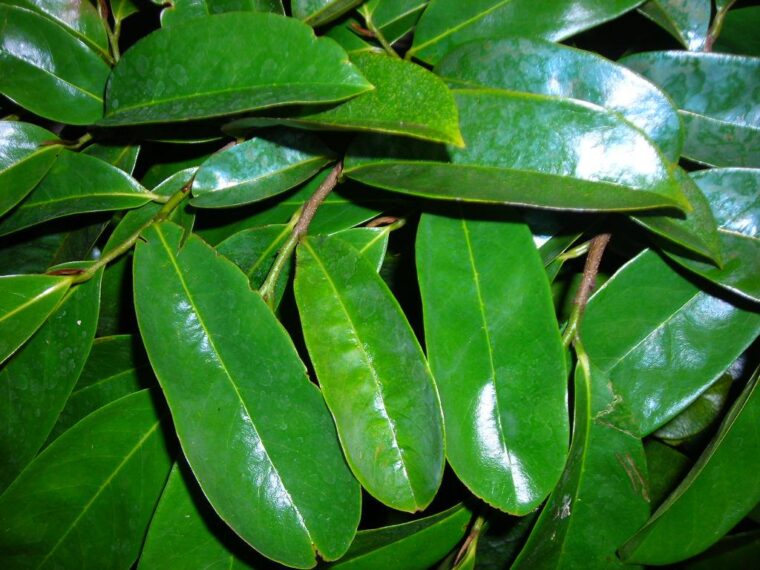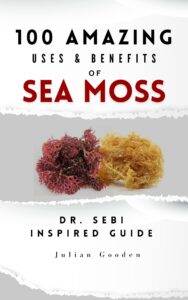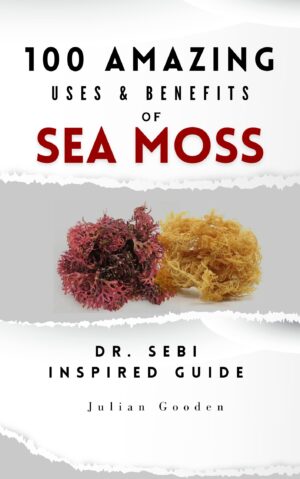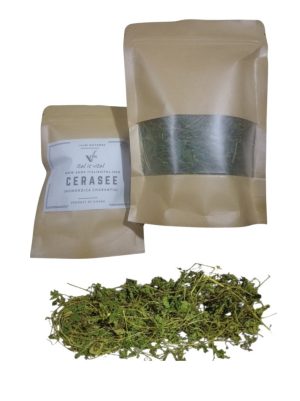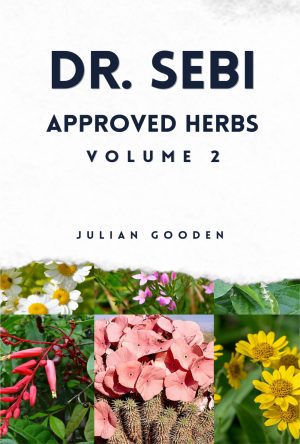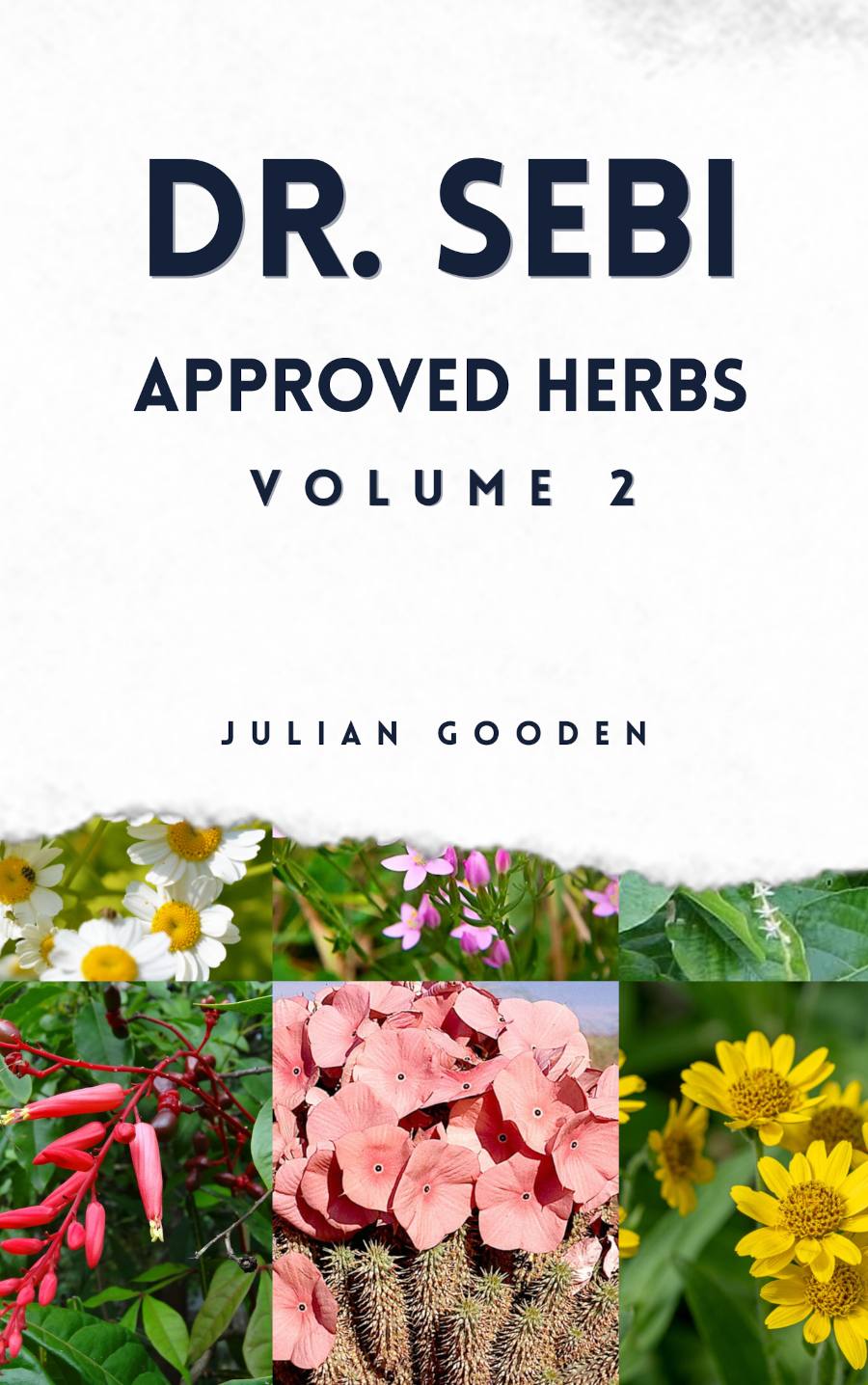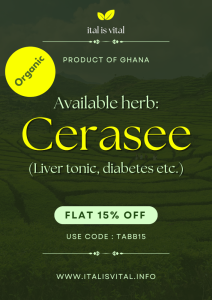Soursop leaves are among the herbal teas recommended on Dr. Sebi’s Nutritional Guide. In this post we feature 10 amazing benefits of the soursop leaves.
Soursop leaves – from the Annona muricata tree – have been used for centuries in traditional medicine systems across Africa, the Caribbean, Central and South America, and Southeast Asia. They are valued for their broad range of therapeutic properties, many of which have been passed down through generations.
Here’s a detailed overview:
Medicinal & Traditional Uses of Soursop Leaves
- Sleep & Relaxation Aid
- Traditional use: Soursop leaf tea is widely taken before bed to calm the nerves and promote restful sleep.
- Reasoning: The leaves contain natural compounds with sedative and muscle-relaxant effects, making them a traditional remedy for insomnia, anxiety, and restlessness.
- Pain Relief & Anti-inflammatory
- Traditional use: Decoctions or poultices made from the leaves are applied to aching joints, back pain, or inflammatory conditions.
- Reasoning: The leaves have anti-inflammatory alkaloids and natural analgesic effects, used for arthritis, rheumatism, and injury-related pain.
- Fever Reduction
- Traditional use: In many tropical countries, boiled soursop leaves are drunk as a cooling tea to bring down high body temperature.
- Reasoning: The leaves help induce perspiration, aiding natural fever management.
- Immune System Support
- Traditional use: Consumed as a preventative tea to maintain health and resistance to illness.
- Reasoning: They contain antioxidants like acetogenins and flavonoids that support immune function and help protect cells from damage.
- Blood Sugar Management
- Traditional use: Used in folk medicine for balancing blood sugar in diabetics.
- Reasoning: Some studies suggest soursop leaves may improve insulin sensitivity and regulate glucose metabolism.
- Digestive Health
- Traditional use: Taken as a mild remedy for constipation, bloating, and indigestion.
- Reasoning: The leaves have antimicrobial properties and may help soothe the digestive tract while promoting healthy bowel movements.
- Skin & Wound Care
- Traditional use: Fresh leaves are crushed and applied as a poultice on boils, rashes, and wounds to speed healing.
- Reasoning: Their antimicrobial and anti-inflammatory compounds help prevent infection and reduce swelling.
- Respiratory Relief
- Traditional use: Steam inhalation from boiled leaves is used for coughs, colds, and mild bronchitis.
- Reasoning: The vapor may help loosen mucus and ease breathing.
- Cancer-related Folk Use
- Traditional use: In several traditional systems, soursop leaf tea is used as part of herbal blends for people with chronic illnesses, including cancer.
- Reasoning: Soursop leaves contain annonaceous acetogenins, compounds that have been shown in lab studies to have cytotoxic effects on certain cancer cells. (Note: This is a traditional use; modern medical advice should always be sought.)
- Blood Pressure Regulation
- Traditional use: Used as a mild natural remedy for high blood pressure.
- Reasoning: The leaves can have a gentle vasodilatory effect, helping relax blood vessels.
Traditional Preparation Methods
- Tea/Infusion: 3-5 fresh or dried leaves steeped in hot water for 10-15 minutes.
- Decoction: Boil 10-15 leaves in 1 liter of water until reduced by half, drink warm.
- Poultice: Fresh leaves pounded and applied directly to the skin.
- Steam Inhalation: Boiled leaves with inhaled vapors.

Soursop Leaf & Ginger Tea
Purpose:
Supports relaxation, boosts immunity, aids digestion, reduces inflammation, and promotes restful sleep.
Ingredients:
- 3-5 fresh or dried soursop leaves (washed)
- 2 cups (500 ml) water
- 1 small slice of fresh ginger root (about 2-3 cm), thinly sliced
Instructions:
- Place the soursop leaves and ginger slices in a small pot.
- Add the water and bring to a gentle boil.
- Reduce heat and simmer for 10-15 minutes.
- Turn off the heat, cover, and let it steep for 5 minutes.
- Strain into a cup and enjoy warm.
Use:
- Drink 1 cup in the evening to relax and support better sleep.
- Can also be taken once daily for overall wellness.
References for Soursop Leaves (Annona muricata) Medicinal and Traditional Uses
- Sleep & Relaxation Aid
- Gavamukulya, Y., Abou-Elella, F., Wamunyokoli, F., & AEl-Shemy, H. (2014). Phytochemical screening, anti-oxidant activity and in vitro anticancer potential of ethanolic and aqueous extracts of Annona muricata (Annonaceae). Journal of Ethnopharmacology, 156, 277-285.
Supports the sedative properties due to alkaloids and other compounds in soursop leaves. - Padma, P., Pramod, N. P., Thyagarajan, S. P., & Khosa, R. L. (1998). Effect of Annona muricata on neuropharmacological activity. Indian Journal of Experimental Biology, 36(7), 711-714.
Demonstrates muscle-relaxant and sedative effects in animal studies.
- Gavamukulya, Y., Abou-Elella, F., Wamunyokoli, F., & AEl-Shemy, H. (2014). Phytochemical screening, anti-oxidant activity and in vitro anticancer potential of ethanolic and aqueous extracts of Annona muricata (Annonaceae). Journal of Ethnopharmacology, 156, 277-285.
- Pain Relief & Anti-inflammatory
- de Sousa, O. V., Vieira, G. D. V., de Pinho, J. J. R., Yamamoto, C. H., & Alves, M. S. (2010). Antinociceptive and anti-inflammatory activities of Annona muricata L. leaves. Brazilian Journal of Pharmacognosy, 20(4), 609-616.
Confirms anti-inflammatory and analgesic effects of soursop leaf extracts. - Chan, P. K., & To, K. K. (2016). Anti-inflammatory and analgesic activities of Annona muricata L. (soursop) in rodents. Journal of Natural Medicines, 70(2), 234-241.
Highlights the use of soursop leaves for arthritis and pain relief.
- de Sousa, O. V., Vieira, G. D. V., de Pinho, J. J. R., Yamamoto, C. H., & Alves, M. S. (2010). Antinociceptive and anti-inflammatory activities of Annona muricata L. leaves. Brazilian Journal of Pharmacognosy, 20(4), 609-616.
- Fever Reduction
- Quattrocchi, U. (2012). CRC World Dictionary of Medicinal and Poisonous Plants: Common Names, Scientific Names, Eponyms, Synonyms, and Etymology. CRC Press.
Documents traditional use of soursop leaves for fever management in tropical regions. - Adewole, S. O., & Ojewole, J. A. (2009). Protective effects of Annona muricata Linn. (Annonaceae) leaf aqueous extract on serum lipid profiles and oxidative stress in hepatocytes. Journal of Ethnopharmacology, 121(1), 171-177.
Mentions the cooling effect and fever-reducing properties in ethnobotanical practices.
- Quattrocchi, U. (2012). CRC World Dictionary of Medicinal and Poisonous Plants: Common Names, Scientific Names, Eponyms, Synonyms, and Etymology. CRC Press.
- Immune System Support
- Moghadamtousi, S. Z., Goh, B. H., Chan, C. K., Shabab, T., & Kadir, H. A. (2013). Biological activities and phytochemicals of Annona muricata: A review. American Journal of Chinese Medicine, 41(5), 977-996.
Details antioxidant properties of acetogenins and flavonoids in soursop leaves. - Coria-Téllez, A. V., Montalvo-González, E., Yahia, E. M., & Obledo-Vázquez, E. N. (2018). Annona muricata: A comprehensive review on its traditional uses, phytochemicals, and pharmacological activities. Food Chemistry, 239, 676-693.
Supports immune-boosting effects through antioxidant activity.
- Moghadamtousi, S. Z., Goh, B. H., Chan, C. K., Shabab, T., & Kadir, H. A. (2013). Biological activities and phytochemicals of Annona muricata: A review. American Journal of Chinese Medicine, 41(5), 977-996.
- Blood Sugar Management
- Adeyemi, D. O., Komolafe, O. A., Adewole, O. S., Obuotor, E. M., & Adenowo, T. K. (2010). Anti-hyperglycemic activities of Annona muricata (Linn). African Journal of Traditional, Complementary and Alternative Medicines, 7(1), 62-69.
Provides evidence for improved insulin sensitivity and glucose regulation. - Florence, N. T., Benoit, M. Z., Jonas, K., Alexandra, T., Désiré, D. D. P., Pierre, K., & Théophile, D. (2014). Antidiabetic and antioxidant effects of Annona muricata leaves in streptozotocin-induced diabetic rats. Journal of Ethnopharmacology, 151(1), 784-790.
Confirms traditional use for diabetes management.
- Adeyemi, D. O., Komolafe, O. A., Adewole, O. S., Obuotor, E. M., & Adenowo, T. K. (2010). Anti-hyperglycemic activities of Annona muricata (Linn). African Journal of Traditional, Complementary and Alternative Medicines, 7(1), 62-69.
- Digestive Health
- Heinrich, M., & Gibbons, S. (2001). Ethnopharmacology in drug discovery: An analysis of its role and potential contribution. Journal of Pharmacy and Pharmacology, 53(4), 425-432.
Mentions soursop leaves’ antimicrobial properties for digestive health. - Badrie, N., & Schauss, A. G. (2010). Soursop (Annona muricata L.): Composition, nutritional value, medicinal uses, and toxicology. Bioactive Foods in Promoting Health, 621-643.
Supports use for soothing digestive issues and promoting bowel regularity.
- Heinrich, M., & Gibbons, S. (2001). Ethnopharmacology in drug discovery: An analysis of its role and potential contribution. Journal of Pharmacy and Pharmacology, 53(4), 425-432.
- Skin & Wound Care
- Moghadamtousi, S. Z., Kadir, H. A., & Zandi, K. (2014). Annona muricata leaves induce apoptosis in A549 cells through mitochondrial-mediated pathway. Evidence-Based Complementary and Alternative Medicine, 2014, 1-12.
Notes antimicrobial properties aiding wound healing. - Quattrocchi, U. (2012). CRC World Dictionary of Medicinal and Poisonous Plants. CRC Press.
Documents traditional poultice use for skin conditions.
- Moghadamtousi, S. Z., Kadir, H. A., & Zandi, K. (2014). Annona muricata leaves induce apoptosis in A549 cells through mitochondrial-mediated pathway. Evidence-Based Complementary and Alternative Medicine, 2014, 1-12.
- Respiratory Relief
- Lans, C. A. (2006). Ethnomedicines used in Trinidad and Tobago for urinary problems and diabetes mellitus. Journal of Ethnobiology and Ethnomedicine, 2(1), 45.
Records traditional use of soursop leaf steam for respiratory issues. - Coria-Téllez, A. V., et al. (2018). Food Chemistry, 239, 676-693.
Mentions mucolytic effects of soursop leaf vapor.
- Lans, C. A. (2006). Ethnomedicines used in Trinidad and Tobago for urinary problems and diabetes mellitus. Journal of Ethnobiology and Ethnomedicine, 2(1), 45.
- Cancer-related Folk Use
- Liaw, C. C., Chang, F. R., Lin, C. Y., Chou, C. J., Chiu, H. F., Wu, M. J., & Wu, Y. C. (2002). New cytotoxic monotetrahydrofuran Annonaceous acetogenins from Annona muricata. Journal of Natural Products, 65(4), 470-475.
Explores cytotoxic effects of acetogenins on cancer cells. - Oberlies, N. H., Chang, C. J., & McLaughlin, J. L. (1997). Structure-activity relationships of diverse Annonaceous acetogenins against multidrug-resistant human mammary adenocarcinoma (MCF-7/Adr) cells. Journal of Medicinal Chemistry, 40(13), 2102–2106.
Supports lab-based evidence for traditional cancer-related uses, with a note for medical consultation.
- Liaw, C. C., Chang, F. R., Lin, C. Y., Chou, C. J., Chiu, H. F., Wu, M. J., & Wu, Y. C. (2002). New cytotoxic monotetrahydrofuran Annonaceous acetogenins from Annona muricata. Journal of Natural Products, 65(4), 470-475.
- Blood Pressure Regulation
- Nwokocha, C. R., Owu, D. U., Gordon, A., Thaxter, K., McCalla, G., Ozolua, R. I., & Young, L. (2012). Possible mechanisms of action of the hypotensive effect of Annona muricata (soursop) in normotensive Sprague-Dawley rats. Pharmaceutical Biology, 50(11), 1436-1441.
Confirms vasodilatory effects of soursop leaves for blood pressure regulation. - Adewole, S. O., & Ojewole, J. A. (2009). Journal of Ethnopharmacology, 121(1), 171-177.
Supports traditional use for hypertension management.
- Nwokocha, C. R., Owu, D. U., Gordon, A., Thaxter, K., McCalla, G., Ozolua, R. I., & Young, L. (2012). Possible mechanisms of action of the hypotensive effect of Annona muricata (soursop) in normotensive Sprague-Dawley rats. Pharmaceutical Biology, 50(11), 1436-1441.


